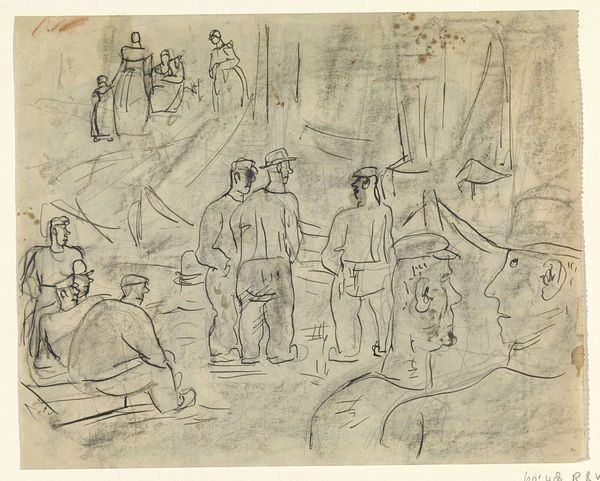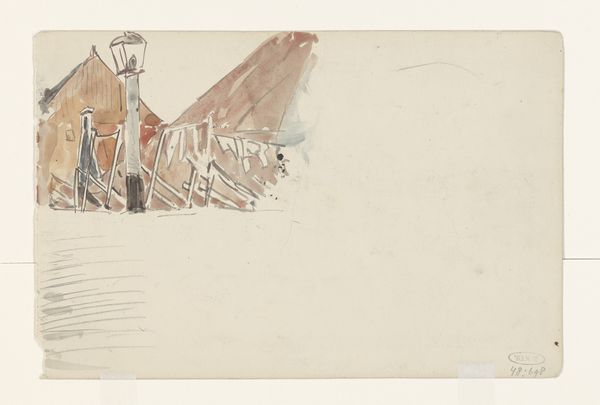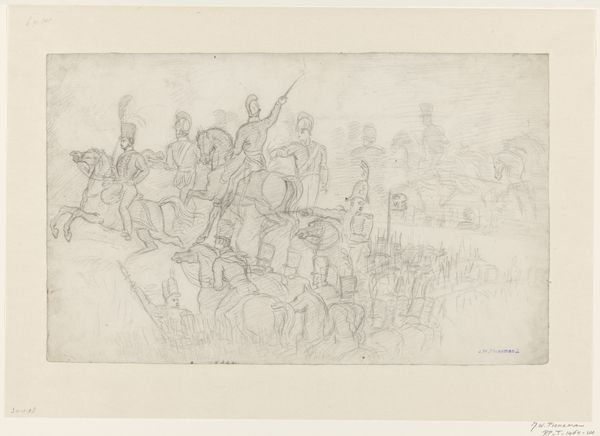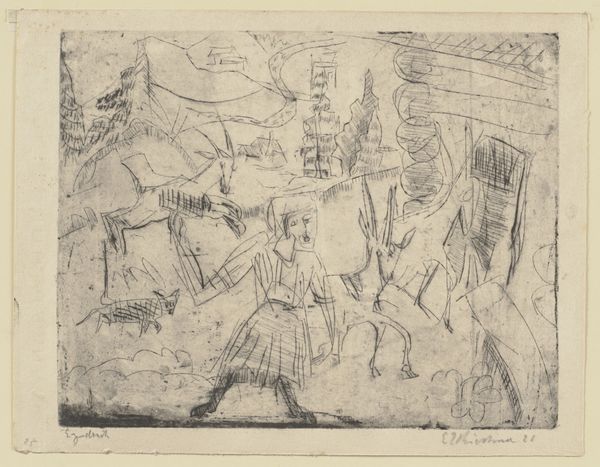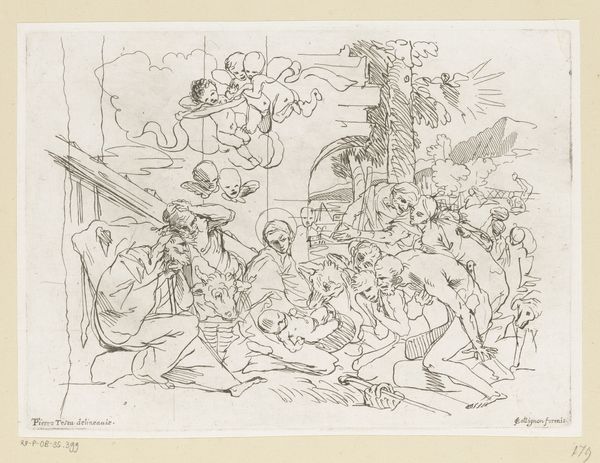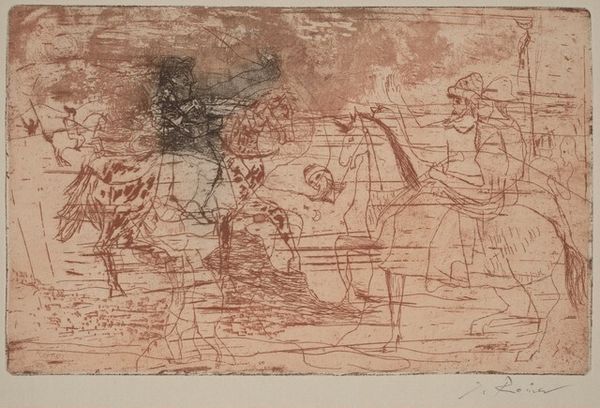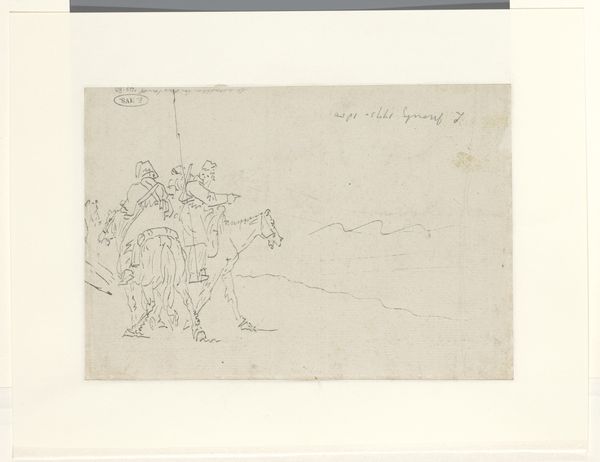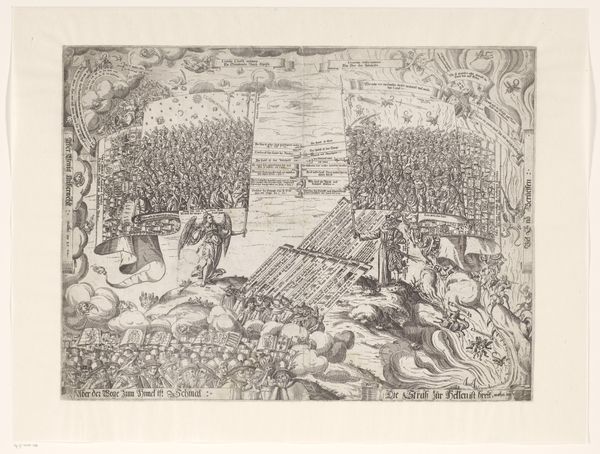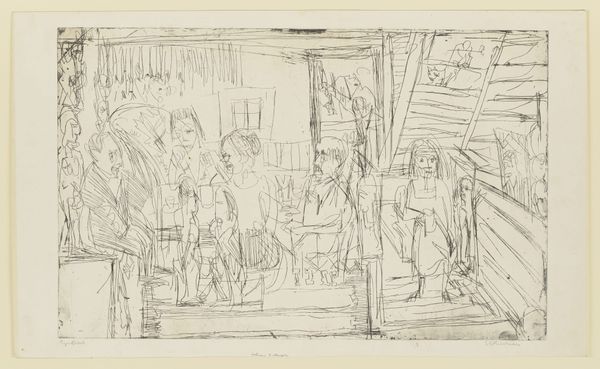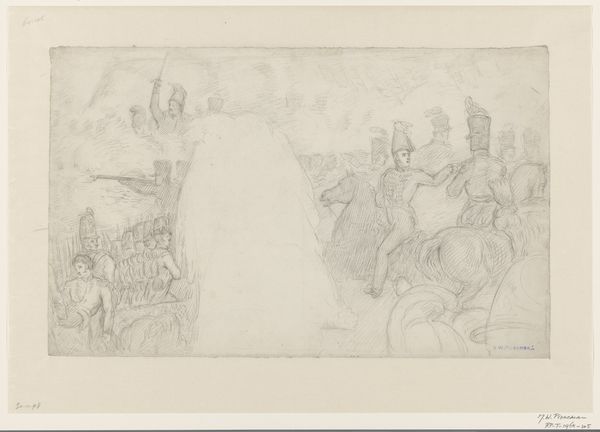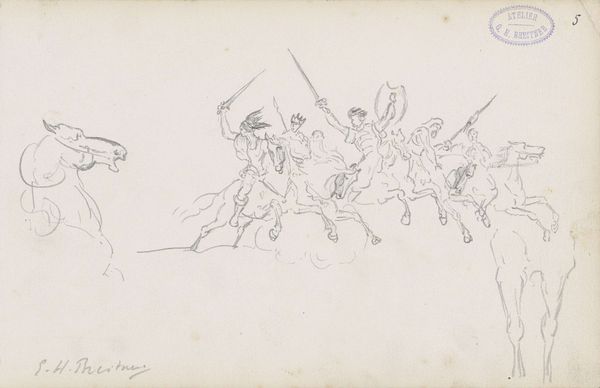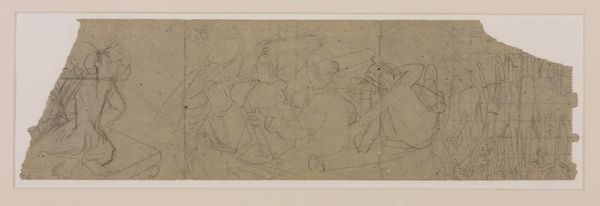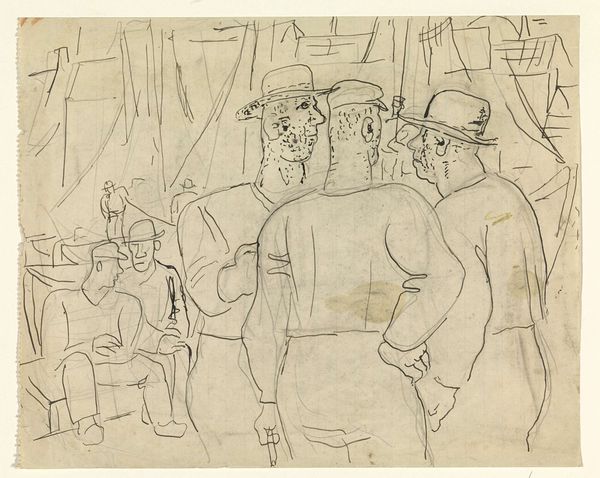
Station of the Cross No. 10: "Jesus is Stripped of His Garments c. 1936
0:00
0:00
drawing, watercolor
#
drawing
#
medieval
#
water colours
#
narrative-art
#
figuration
#
watercolor
#
history-painting
Dimensions: overall: 47.4 x 58.7 cm (18 11/16 x 23 1/8 in.) Original IAD Object: Approximately 30 x 50 in.
Copyright: National Gallery of Art: CC0 1.0
Curator: This watercolor drawing by Geoffrey Holt, created around 1936, is titled "Station of the Cross No. 10: 'Jesus is Stripped of His Garments.'" I see immediately a rawness to it that I wasn't quite expecting. Editor: Absolutely. There’s a medieval flatness, and the visible watercolor washes, along with those strong colors, communicate intense vulnerability and denouncement, really. The stripping scene itself becomes emblematic of systemic oppression. It is quite literally disrobing dignity and identity in order to publicly shame an individual—to perform a spectacle. Curator: The way he’s rendered Christ’s figure… there's a brutal honesty in the blood and the forced pose. Almost childlike, in its simplicity. What I mean to say, I wonder whether Holt was interested in showing him vulnerable to critique notions of masculinity? Editor: It’s fascinating to consider that juxtaposition. Jesus is so often seen as stoic and divinely powerful in these representations. But the vulnerability represented here is essential to understanding his suffering—a form of subjugation not just by individuals but also by the patriarchal power structure embodied in the Roman officials. His masculinity is not what saves him here, of course, or rather, his masculinity and how society constructs what it entails become a focal point to abuse him. Curator: Do you think Holt made a conscious decision to embrace this almost intentionally crude style? It's certainly a contrast to the polished, idealized religious art we often see. Editor: I do. Given the context of the time –pre-WWII–, the turn to history paintings takes on a charged perspective. In essence, it challenges viewers to question historical injustices and see them mirrored in contemporary contexts. The figures standing by, their faces stark, are equally telling of Holt’s understanding of complicity as part of violent structures. This artistic choice is not merely about depicting the scene but forcing viewers to engage in active witnessing. Curator: I hadn't thought of the setting quite that way but the intent in the witnessing has changed my interpretation of this rather simple yet, as you say, effective drawing. Editor: Yes, seeing it through that frame reminds us that historical narratives aren't static but continue to echo—often uncomfortably—in today’s world.
Comments
No comments
Be the first to comment and join the conversation on the ultimate creative platform.
